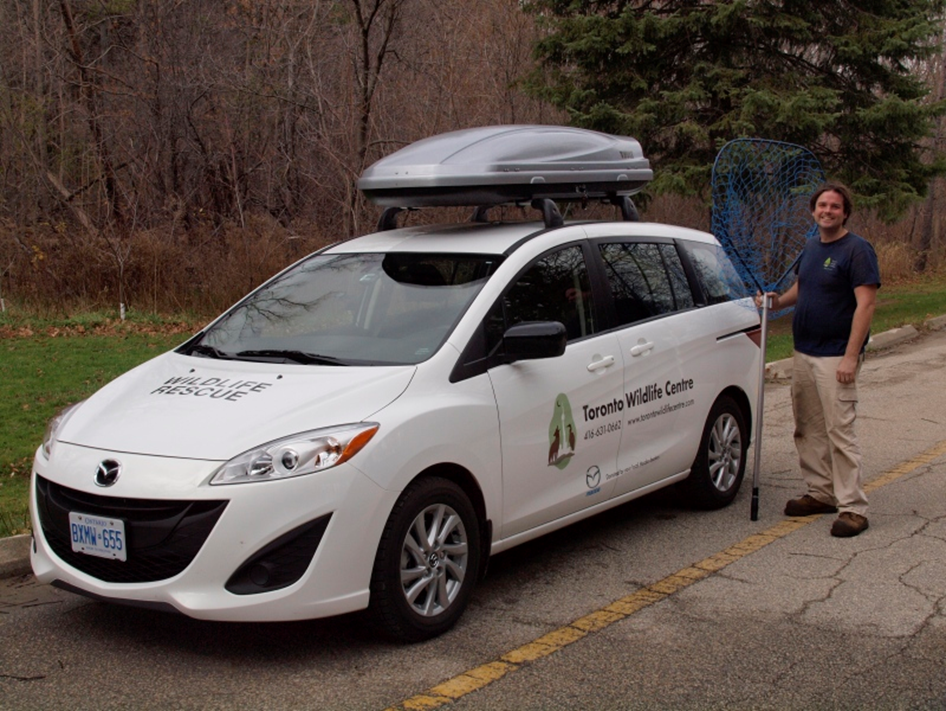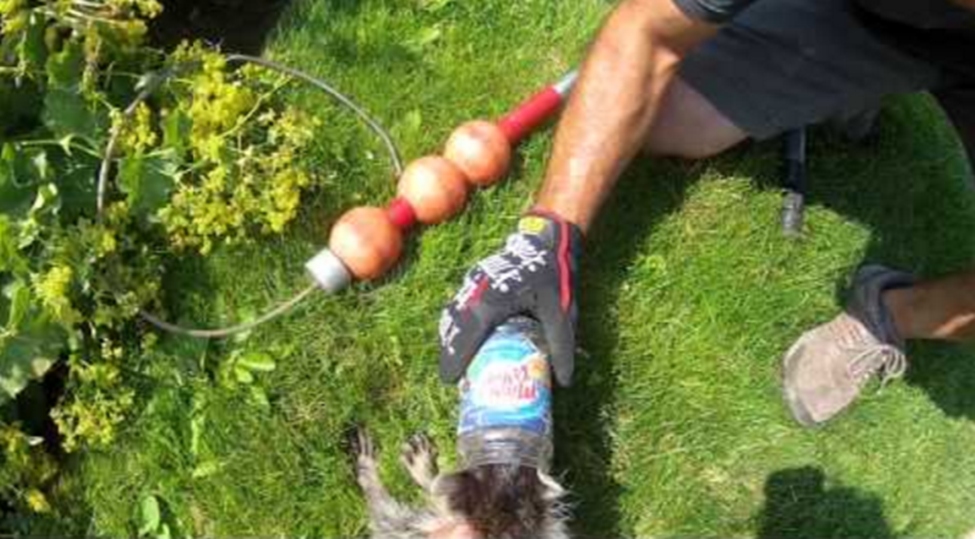
Ben Waese-Perlman and Liam Kane Meilleur
Bloor Collegiate Institute (Toronto, Ont.)
A Harmful Cocktail: How Plastic Pollution Hurts Urban Wildlife
We humans are an extremely prolific species. We live on every continent and can adapt to almost any environment. In the 1950s, the world had around 2.5 billion people, which in under 70 years has ballooned to over 7 billion worldwide. This rapid expansion brought huge changes, both economically and ecologically. The results have been disastrous: climate change is an existential threat, species are going extinct quicker than ever before, and natural resources are being depleted.
At the turn of the 20th century just 3% of the world’s population lived in cities. By 1950, that figure was 30%. Today the urban dwellers have surpassed those who inhabit rural environments. The change is even more striking in developed nations. Over 80% of Canadians reside in an urban setting, as opposed to just 45% a century ago. Urbanization has ushered huge cultural, social and economic changes had unique environmental consequences.
Plastic today is ubiquitous. It drives the economy and enables the population growth and urbanization we are experiencing. Invented in 1907 by Belgian chemist Leo Baekeland, it very quickly became a large part of everyday life because it was durable, adaptable, practical and very cost effective to produce. Because it was so cheap to make, plastic became the default material for disposable products. This ability to produce so many cheap products was a major factor in creating the consumerist culture that infests society today. Each year, around 300 million tons of plastic waste is produced every single year.
This relatively new trio combine to form a problematic cocktail for urban wildlife. Living in a city, a new world for the animals which is filled with people and plastic pollution creates unique threats. Sometimes they get into tough situations and need help, which is why organizations like the Toronto Wildlife Centre exist.
The Toronto Wildlife Centre (TWC) is an organization with the goal of promoting peaceful coexistence between humans and animals. Focusing on wild animals, the TWC’s main service is to provide shelter and rehabilitation for sick or injured animals. They deal everyday with the results of plastic pollution directly harming wildlife. For more expertise on the issue, we reached out to the TWC and we interviewed Andrew Wight, the Rescue Team Leader at the Toronto Wildlife Center. Having joined the center full-time in 2003, he has extensive experience rescuing wildlife from various precarious situations. His job is to go out and rescue wildlife that have been injured or become ill where members of the public can’t.
 Andrew Wight, Rescue Team Leader, on a wildlife rescue mission with equipment
Andrew Wight, Rescue Team Leader, on a wildlife rescue mission with equipment
“I feel that living in an urban habitat both gives positive and negative things for the animals,” he said. “They come into contact with things that wouldn’t exist in the wild environment. One of the specific things that they’re always coming across is garbage. As much as we try to keep the city clean it’s just a matter of fact that there’s always going to be garbage.”
Many animals are thriving in the new urban environment and adapting well to the increased human presence. But it is a double-edged sword as urban wildlife are the most vulnerable to the toxic effects of pollution.
“These creatures, a lot of them scavenge through the city, and if they find a nice piece of stinky garbage they’re going to be drawn to that and often if the product is synthetic, like plastic, they can get caught up in it and end up being in a bad situation,” he explains. “Normal function is lost. It happens all the time.”
 This is one of many racoons who end up in similar predicaments
This is one of many racoons who end up in similar predicaments
The Toronto Wildlife Centre takes in approximately 5000 animals every year from a vast array of species. “A huge amount of the time that we are going out in an urban setting to rescue wildlife it’s because of a human cause of some sort,” he added. One of the more common occurrences is adventurous animals seeking food gets their limbs stuck in plastic waste. He had a list of examples of the risks urban wildlife face:
- Raccoons frequently get their heads stuck in peanut butter jars. Sometimes they have difficulties removing it, saying, “In some cases the animal has to be brought back to the centre, sedated so that its calmer and the muscles relax so that we can slide it off of their necks easier. Sedation keeps them from fighting it. And things are much easier when everything is calm.”
- Skunks stick their heads through plastic lids and get stuck. As they grow the plastic can start to cut into their skin. Andrew said, “Sometimes it gets so deep that their skin has grown around it … they need surgery and the skin gets sewn back together.”
- A goose swallowed a piece of three-foot-long polypropylene rope. “A foot of it was hanging out its mouth. It was already all the way into its stomach and it had to be surgically removed,” he added.
- Robins and sparrows are hurt as well. Wight explains that “the nesting material they collect often will contain a plastic twine, and I have no idea what this twine is used for but I see it in every robin’s nest. Often the young birds who are growing in this nest which is their home are growing within a knot in this twine. One day they try to fly out of there and they’re anchored to it.”
Andrew suggests proactively dealing with waste in the environment. “I always say taking care of your garbage responsibly,” he suggested. “You see garbage, cut it up and throw it away. You want to live in a world that’s clean.”
The issue is that we have a world where animals are so vulnerable to the effects of humans, but they have nowhere to go for help. We don’t notice how many animals live with us in an urban environment. This was the natural habitat for so many animals until we showed up, now we’re living with them and they’re not a conscious part of our everyday life but our everyday life affects them a lot. Part of the solution is having organization like the TWC that exist to help wildlife.
The other part is using biodegradable plastic. “Plastic of good quality lasts forever. Because it’s so cheap to make it’s used in a lot of disposable things, and that’s where we’ve gotten in trouble,” Wight said. “It would be very hard to see a world without plastic, at least the way we know it now.” By making the switch to biodegradable plastic we can lower the amount of plastic in the wild. Biodegradable plastics are made of materials that break down under certain conditions. While normal petroleum-based plastics take upwards of 100 years to break down, a virtual eternity of animal harming. Biodegradable plastic breaks down in only a couple years.
Even with current technology we have so many ways to stem the flow of plastic into our environment. With some advancements in science, the tools will be at our disposal to stop the harm caused by plastic pollution.
Sources:
Digital image. Wildlife Rescue. Toronto Wildlife Center, n.d. Web. <https://www.torontowildlifecentre.com/what-we-do/wildlife-rescue/>.
Townsend, Andrea K., and Christopher M. Barker. “Plastic and the Nest Entanglement of Urban and Agricultural Crows.” PLOS ONE. Public Library of Science, 31 Jan. 2014. Web.
“Biodegradable Plastics: Are They Better for the Environment?” Biodegradable Plastics: Are They Better for the Environment? FuturEnergia, n.d. Web.
“United Nations Population Division | Department of Economic and Social Affairs.” United Nations. United Nations, n.d. Web.
Wassener, Bettina. “Raising Awareness of Plastic Waste.” The New York Times. The New York Times, 14 Aug. 2011. Web.
ARTIBISE, ALAN F.J., and G.A. Stelter. “Urbanization.” The Canadian Encyclopedia. Historica Canada, n.d. Web.
“Human Population: Urbanization.” Human Population: Urbanization. Population Reference Bureau, n.d. Web.
“Plastic.” History Learning Site. N.p., n.d. Web. <http://www.historylearningsite.co.uk/inventions-and-discoveries-of-the-twentieth-century/plastic/>.

